The top 5 space and astronomy stories for 2023

Throughout the past year, hardly a week went by when there wasn't something amazing going on in space, from the farthest reaches of the universe to right in our own cosmic backyard.
In no particular order, here are the top five stories from 2023, chosen for their impact on our lives, their importance to Canada, or their potential for redefining our place in the universe.
Lucy discovers a unique celestial object
On the first of November, NASA's Lucy spacecraft passed by an asteroid named 152830 Dinkinesh.
The maneuver wasn't supposed to be anything particularly remarkable. It was just the first test of the probe's ability to track an asteroid target and make a close flyby to take high-resolution images.
On approach to Dinkinesh, though, the mission team saw that the brightness of the asteroid changed on a regular basis. That indicated that it may have a small moon orbiting it.
This was confirmed when the first images of Dinkinesh were received here on Earth. However, no one expected this to turn out to be a one-of-a-kind discovery! This tiny moon, now named Selam, was actually two moons, so close together that they touched!
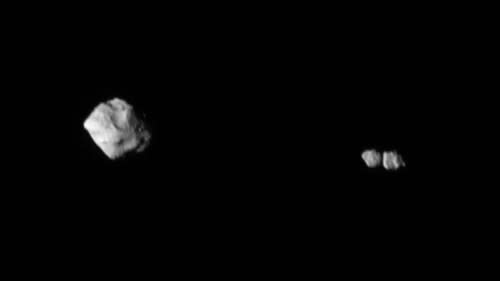
Asteroid 152830 Dinkinesh (left) is shown here with Selam, its unique contact binary asteroid moon (right), as seen by the Lucy spacecraft's L'LORRI camera. Credit: NASA/Goddard/SwRI/Johns Hopkins APL
While over 450 of binary asteroids have been discovered so far, plus 10 trinary asteroids (asteroids with two moons), and even one quadruple system (an asteroid with three moons), this is the very first contact binary asteroid moon ever found.
Read more:
Lucy's first closeup of asteroid Dinkinesh reveals it has a small moon!
Surprise! Asteroid Dinkinesh's tiny moon was hiding a secret!
Chandrayaan-3 lands at Moon's south pole
Why is the south pole of the Moon of such interest to the world's space agencies?
In one word: water!
Orbiters and impactors have revealed an abundance of water trapped in the perpetually shadowed craters and terrain near the lunar south pole. This water may be locked up in minerals, making it of less use to us. However, it could be in the form of ice deposits, ready to be extracted. Such a resource would be a boon for space exploration, providing water, oxygen, and fuel for future missions.
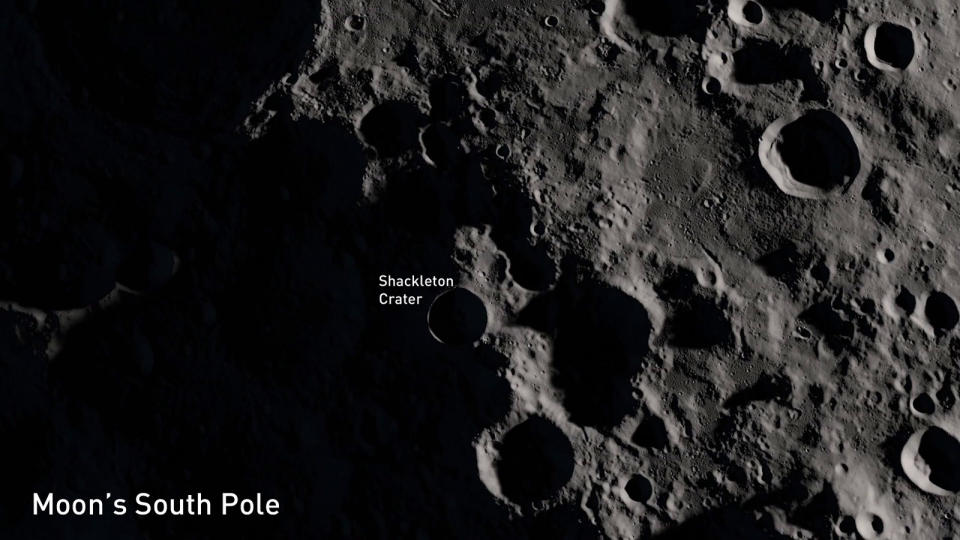
The perpetually shadowed terrain surrounding Shackleton crater, near the Moon's south pole, is shown here in this composite image taken from data collected by NASA's Lunar Reconnaissance Orbiter. Credit: NASA
Up until August of this year, though, all attempts to land a probe at the south pole have ended in failure.
On August 23, the Indian Space Research Organization (ISRO) successfully landed Chandrayaan-3 — their third mission to the Moon and their second attempt to land a robot at the lunar south pole.
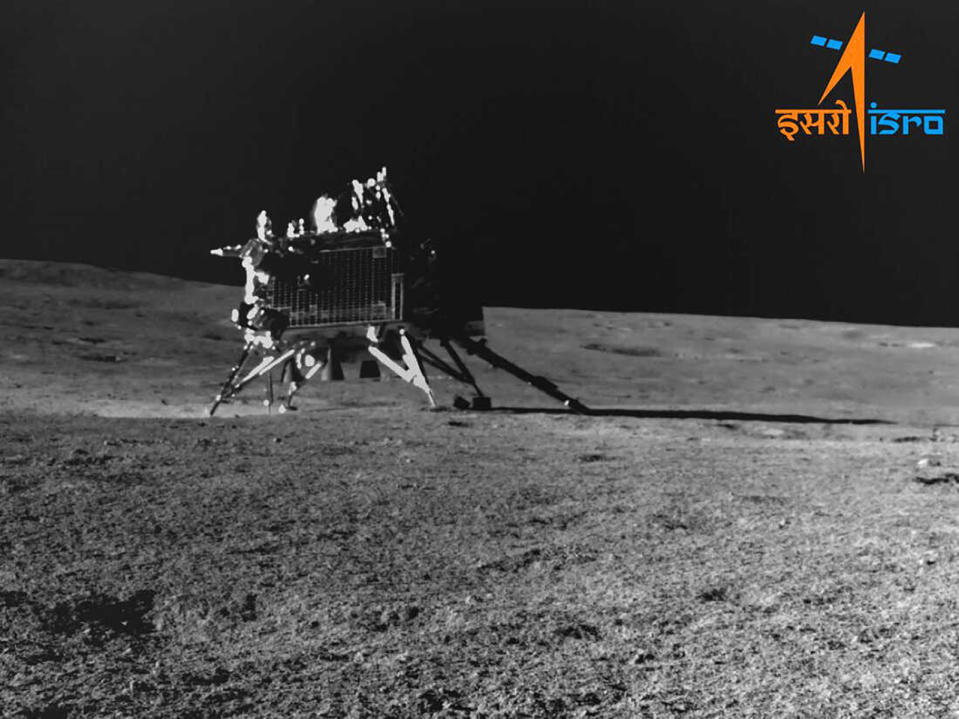
*The Chandrayaan-3 Vikram lander rests near the Moon's south pole. The image was captured on August 30, 2023, by the small Pragyan rover that accompanied the lander on the mission. Credit: ISRO.
With this first successful landing at the Moon's south pole, other space agencies will soon follow, with the Artemis 3 mission targetting that area to land a team of astronauts in the next few years.
Read more: India celebrates 'victory cry' as Chandrayaan-3 spacecraft lands on the moon
Psyche mission launches to a $10 trillion asteroid
Out between the orbits of Mars and Jupiter is a fairly unique object: an asteroid with an unusually high metal content.
Named 16 Psyche, this asteroid could be the exposed interior of an ancient protoplanet that had its crust broken off by impacts, billions of years ago. It could also be an asteroid that experienced a phenomenon known as ferrovolcanism, where its metallic core erupted onto the surface via iron volcanoes. Or, it could be something we haven't even thought of yet.
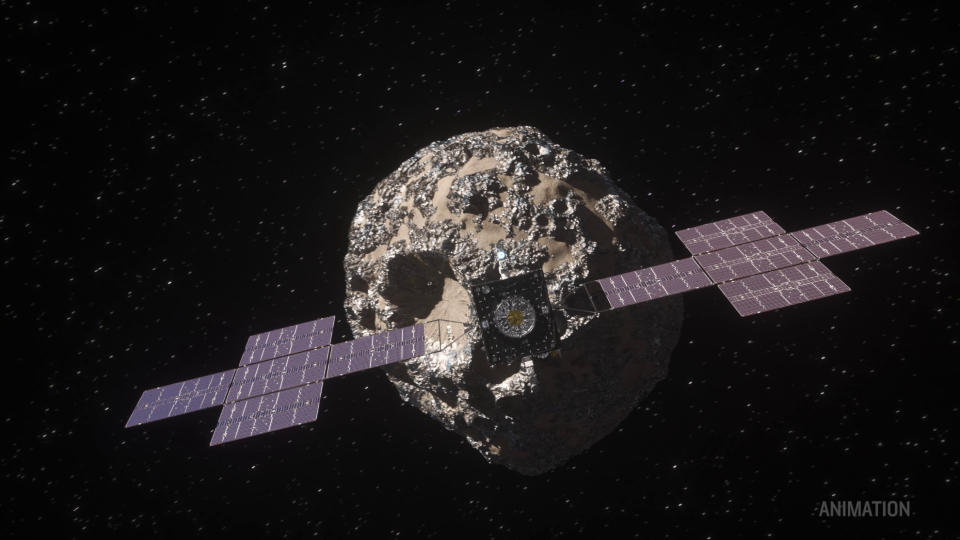
This simulation shows NASA's Psyche mission arriving at asteroid 16 Psyche in August of 2029. Credit: NASA
That's why NASA's Psyche spacecraft is travelling there. When the probe arrives in 2029, it will orbit 16 Psyche, study it, and reveal its actual nature to us. This could provide us with the very first direct way to examine the elements and structure of a planetary core.
Read More: After weather delay, NASA Psyche launches to explore a $10 trillion asteroid
JWST spots carbon on Jupiter's moon, Europa
The James Webb Space Telescope continues to wow us with amazing imagery of the cosmos, new discoveries in our own solar system, and new mysteries of the universe.
One of the most remarkable things Webb has revealed, though, is the presence of carbon dioxide on the surface of Jupiter's icy moon, Europa.

This enhanced view of Europa, taken by the Galileo spacecraft, shows the cracked icy surface of the moon. The large yellow-shaded region is Tara Regio, which was found to have an abundance of carbon dioxide ice. Credit: NASA/JPL-Caltech/UArizona
We've known for years now that Europa has an immense saltwater ocean trapped under its frozen surface. That fact, alone, has led to speculation about the habitability of that ocean.
However, after observations from JWST detected an abundance of carbon dioxide ice on Europa's surface, researchers showed that the subsurface ocean is the likeliest source of that carbon.

JWST's image of Europa (top) is shown here along with the Moon in three different wavelengths of infrared light (bottom). Tara Regio is the bright region towards the bottom right of each image, showing an abundance of CO2 ice. Credit: NASA/ESA/CSA/Cornell/STScI
This doesn't mean we now have evidence of life on Europa. However, the presence of this carbon does increase the probability that we could find life there!
Earth is currently the only place where we know, for sure, that life exists. If life also evolved on the tiny icy moon of a gas giant, chances are it also developed elsewhere — other moons like Enceladus and Titan, and on exoplanets orbiting other stars. Thus, this discovery could be the next step in showing that we aren't alone in the universe!
Read More: Europa's subsurface ocean may be more habitable than we thought
A Canadian astronaut is going to the Moon!
NASA's Artemis II mission is scheduled to launch sometime in late 2024. Following a similar course as the uncrewed Artemis I flight from 2022, an Orion spacecraft will travel to the Moon and back. This time, though, it will be carrying four astronauts on board.
In April of this year, Jeremy Hansen was chosen to represent Canada on that flight.
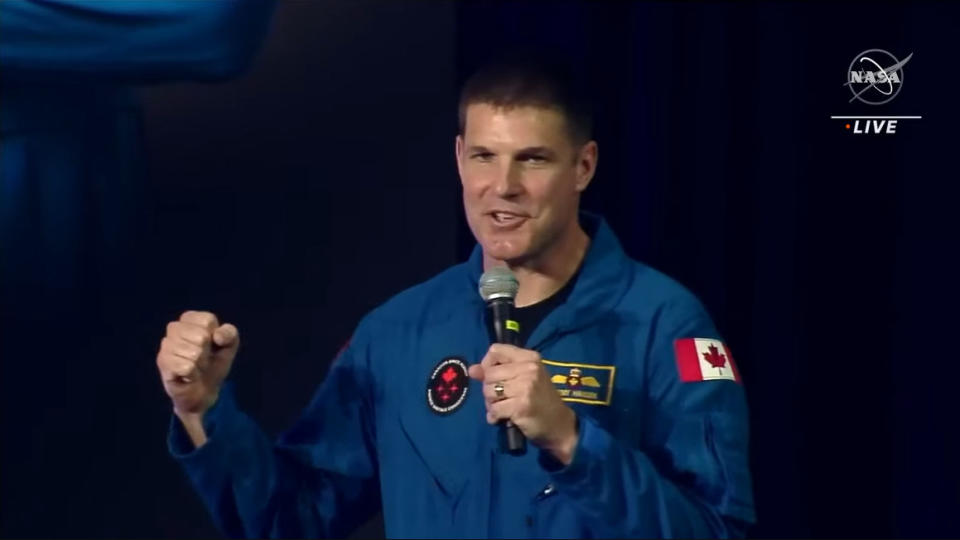
"We are going to the Moon together. Let's go!' says CSA astronaut Jeremy Hansen during the Artemis II announcement on April 3, 2023. Credit: NASA TV
Hansen has been part of Canada's astronaut core since 2009. The Artemis II mission will be his first trip to space.
In late November, the Canadian Space Agency announced new assignments for the nation's two newest astronauts — Jenni Gibbons and Joshua Kutryk. Kutryk will be heading to the International Space Station sometime in 2025. Meanwhile, Gibbons has been assigned as Hansen's backup for Artemis II.
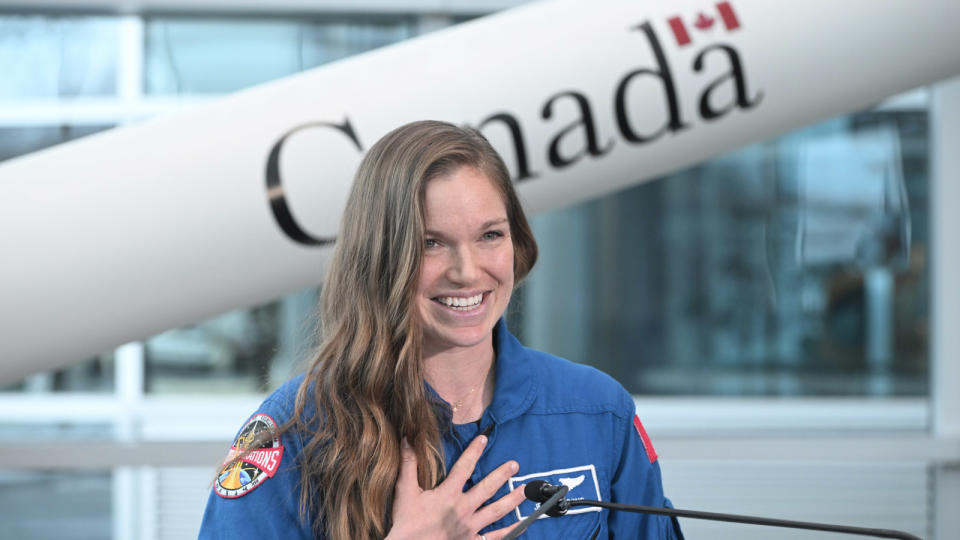
Jenni Gibbons speaks after Minister Champagne's announcement on November 23, 2023. Credit: CSA
What that means is, if Hansen is unable to fly on Artemis II for any reason, Gibbons will step in to take his place. Thus, she will be going through all of the same training as Hansen, providing Canada with a guaranteed spot on this historic return to the Moon.
Read More:
Canadian astronaut Jeremy Hansen chosen to fly around the Moon on Artemis 2
Canada's newest astronauts get their first missions to space

